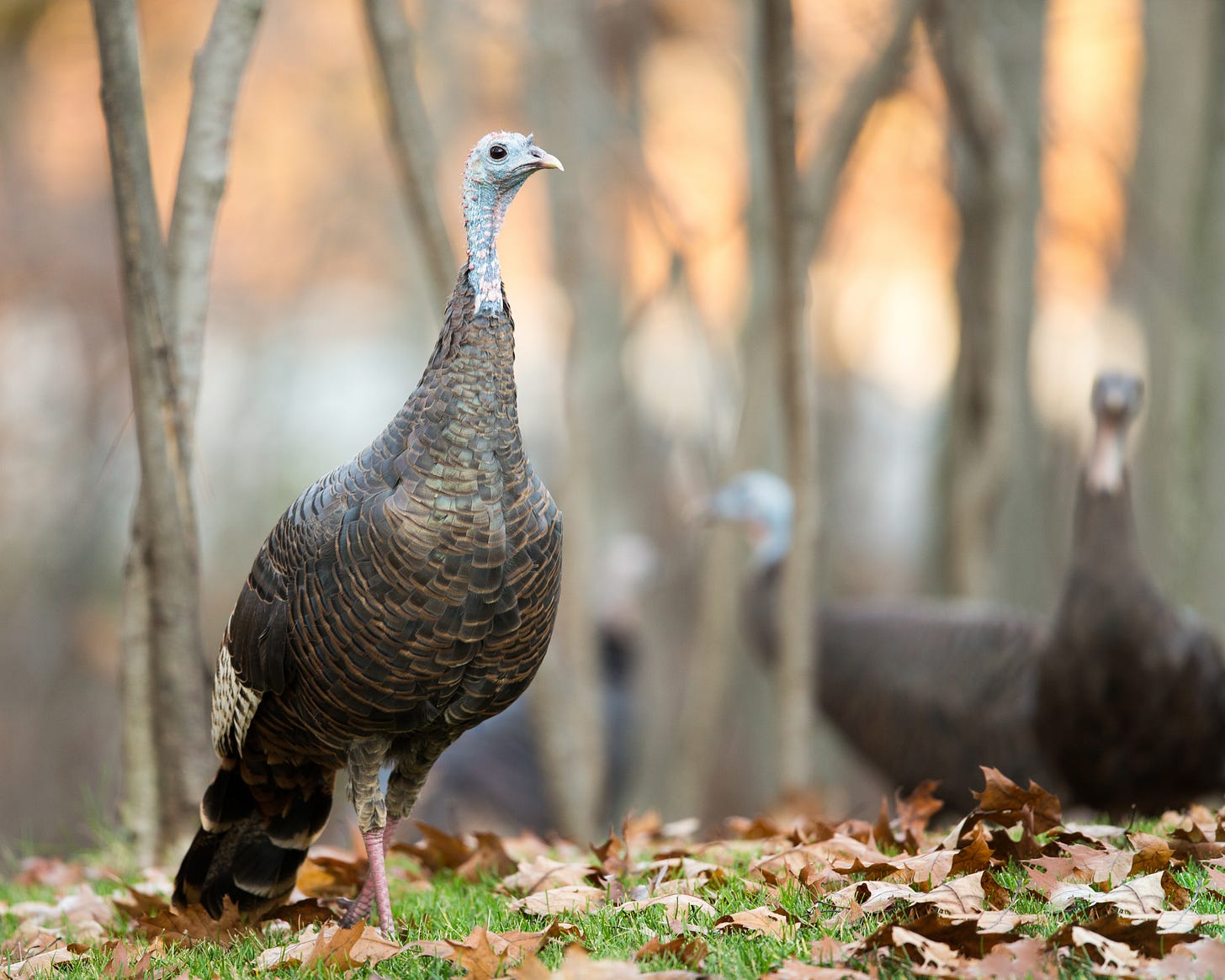Another week, another Japanese micro-season. Unlike the slavish quarters of labor time made up by corporate humanoids, micro-seasons are straight from source, the great unity, the god-babe herself: 💚 Mama Natura 💚. Current J.M.S. (out of 72!): Silkworms start feasting on mulberry leaves. As for McGolrick Park, perhaps New York City and even larger swathes of the eastern US, we notice—
MICRO-SEASONINGS
Barberries turn blue • Eastern Tiger Swallowtails arrive • First heatwave • Cape May Warblers visit • Tennessee Warblers visit • Fish Crows linger • Wild Turkeys • Blackpoll Warblers squeak • Lanternflies reappear • Hawthorns shed petals
Barberries of the evergreen shrub berberis bealei, or Leatherleaf Mahonia, were noticed behind the restrooms. Native to mainland China, the plant can be boiled and strained for medicinal purposes, especially the treatment of wounds, strep throat and tuberculosis. Its berries have been used in pies, jellies, jams, beverages and confections
Did we miss anything? We’ll declare this micro-season’s “official” name at year’s end.
MAY 25, 2024 — SATURDAY
Conditions: Sprummer • Attendance: 117 • Vibrations: Pe-uh-weeee’d
Saturday birds: Blackpoll Warbler · Cedar Waxwing · American Redstart · Eastern Wood-Pewee · Chimney Swift · Common Grackle · Downy Woodpecker · Northern Cardinal (heard) · Blue Jay (heard) · Laughing Gull (flyover) … And the virtually always present in urban parks like McGolrick: Rock Pigeon, European Starling, American Robin, House Sparrow, Mourning Dove.
Pic of the day via @krinstinlunt:
MICRO-ISH-LESSON: FIRST SEENS
Two quick points of jargon for the uninitiated: 1. eBird is the canonical, global bird database out of Cornell University. Its data—crowdsourced by actual birders like us—powers the Merlin app. 2. Virtually every US park is a hotspot. Go ahead, search for your fav childhood hangout here.
A First Seen, in birder gobbledygook (foreshadow!), is a species not previously logged at an eBird hotspot such as McGolrick Park.
First Seen is bit of a misnomer though. For one, identifying a bird by call can substantiate an eBird record. For two, it’s possible that hardened, pre-internet birders—let alone the indigenous peoples who knew our park as forest / wetland—previously noticed “first seen” birds in situ at some point.

That all acknowledged, we still celebrate first seen birds because they’re modern citizen-scientific breakthroughs. Every First Seen is evidence of a location’s importance to birds and that a fluorescence of non-human life persists.
This week McGolrick Park had two firsts—
MCGOLRICK BIRD #114: Tennessee Warbler
On Tuesday, May 21, Brittany Radocha (a.k.a. It’s-Brittany-Bitch) and Parsley Steinweiss (a.k.a. P-Sizzle) heard then Sound ID’d then saw a white bottomed, green winged, broken eye-ringed, white-browed Tennessee Warbler. The tiny bird was/is on its way from the Carribean to Canada 😵💫. More at IG.
MCGOLRICK BIRD #115: Wild Turkey
Like 24 hours later, a DINOSAUR! Wild Turkey was reported to baddies Julia Scinto and Jeremy Danneman then noticed by many in McGolrick Park. This isn’t as insane as it seems. Wild Turkeys be outside:
These zoomed-out range maps overpromise. Wild Turkeys haven’t flooded New York state, including NYC, in some crazed lavender wave. But they’re around, especially on the city’s less urban periphery, hidden in plain sight. What they’re doing in New York City right now, en masse—incl. stopping at Saks Fifth Avenue (shoutout Ryan Overhiser for the tip)—is hard to say.
Wild Turkeys—ancestors to the domestic turkeys whom we eat in November plus year-round on avo/swiss cheese sandwiches—are thought to have inhabited North America longer than humans. Ancient Mesoamericans first tamed them, digging on their meat and eggs, plus borrowing their feathers for decorative purposes. A second wild turkey of the Americas, the too-beautiful-for-this-world Ocellated Turkey, can be found in Mexico.
Wild Turkeys are a conservation success story. Though European settlers and their descendants decimated the species—courtesy of those shitty old chestnuts a) habitat destruction and b) unchecked hunting—1960’s conservationists stepped in and corrected course. We heart heartening stories of humans restoring nature. Thanks, past homies.
Check all of McGolrick’s 115 First Seen bird records here
Learn more about Tennessee Warblers here
Learn more about Wild Turkeys here
From a sweet section of Wikipedia’s Wild Turkey entry called Positive relationships with other wild species: “Turkeys will occasionally forage with deer and squirrels, and may even play with them. By foraging together, each can help the other watch for predators with their different senses: the deer with their improved olfactory sense, the turkey with its superior sight, and squirrels providing an additional set of eyes from the treetops.”
Check our NYC’s most common 22 warblers reel for a now slightly outdated warbler refresh
UPDATES, ANNOUNCEMENTS, REQS
We don’t identify as sciencey, but birds do make us sci-curious. Same? Experiment at one of these upcoming events
- Tuesday, May 28th at 3pm—As part of the fifth annual Black Birders Week, a panel of biologists, naturalists and educators will raise awareness about the challenges facing birds and marginalized communities in urban environments. More info here
- Sunday, June 2nd at 12:30pm—Plant ID Walk at the Ridgewood Reservoir
- Sunday, June 2nd; all day, starting at 9am—A slew of events organized by our pals at the Red Shed Community Garden, just across the BQE. We’ll be there. Stop by whenevs
- Saturday, June 1st at 10am—Hit up the Bronx’s Soundview Park for “a morning of environmental revitalization!” Plus: “fun, new friends, and dirty hands.” More info here
- Saturday, June 8th, 10:00am—The 8TH ANNUAL HORSESHOE CRAB FESTIVAL at Broad Channel American Park. This free event celebrates the ancient mating ritual of Horseshoe Crabs, "living dinosaurs" who visit NYC’s shores each year and, besides horse-shoein’ around, are a vital food source for migrating shorebirds like the endangered Red Knot







